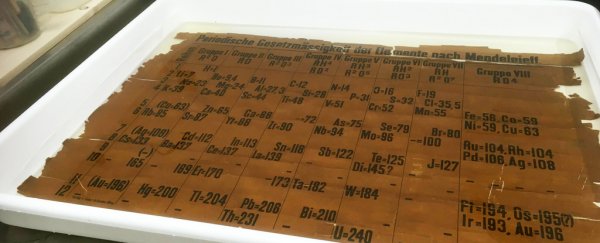It's amazing what you can find when you do a good clear-out. Just ask chemistry researcher Alan Aitken.
The scientist, from Scotland's University of St Andrews, was rummaging through a storage area under a chemistry lecture room back in 2014 when he stumbled upon a unique relic of scientific history.
Stashed amidst chemicals and random laboratory equipment, a roll of teaching charts held a fragile, flaking secret: what is thought to be the world's oldest surviving copy of the periodic table.
The document, annotated in German, was analysed by an expert on the periodic table from the University of California, Los Angeles, who dated it to between 1879 and 1886 – based on the elements that appear on the chart.
 (University of St Andrews)
(University of St Andrews)
Germanium, discovered in 1886, is not listed, whereas gallium and scandium, discovered in 1875 and 1879, are present.
A subsequent deep-dive into the university's long-ago finances produced an entry recording a purchase of an 1885 table from a publisher based in Vienna, suggesting this is the oldest known surviving periodic table – produced less than two decades after the legendary chemist Dmitri Mendeleev made his famous discovery.
The veritable poster has been given a full conservation treatment, including a cleaning, a couple of chemical baths to balance the paper's pH, and even a gentle repair process using Japanese kozo paper and a paste made out of wheat starch.
It will now be stored in climate-controlled conditions at the University of St Andrews, but a full-size copy is on display at the university's chemistry department.
